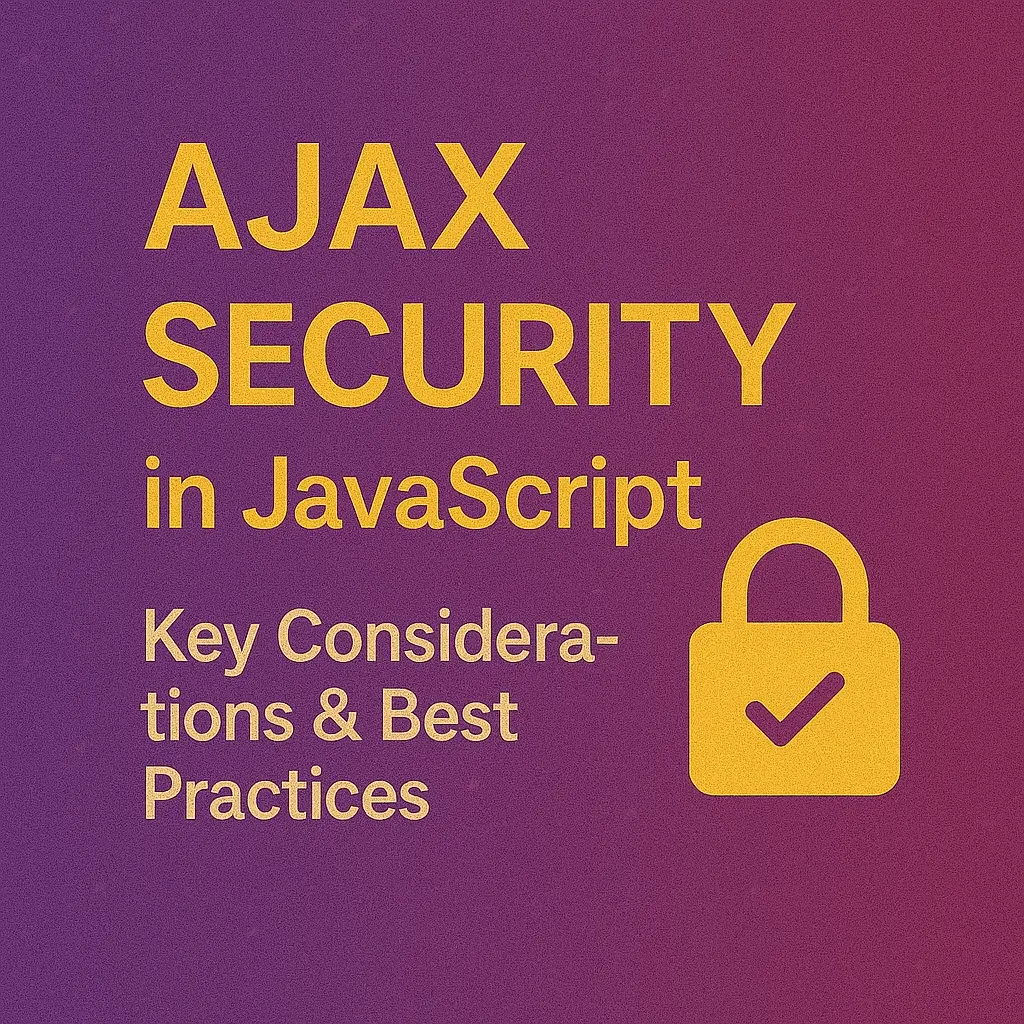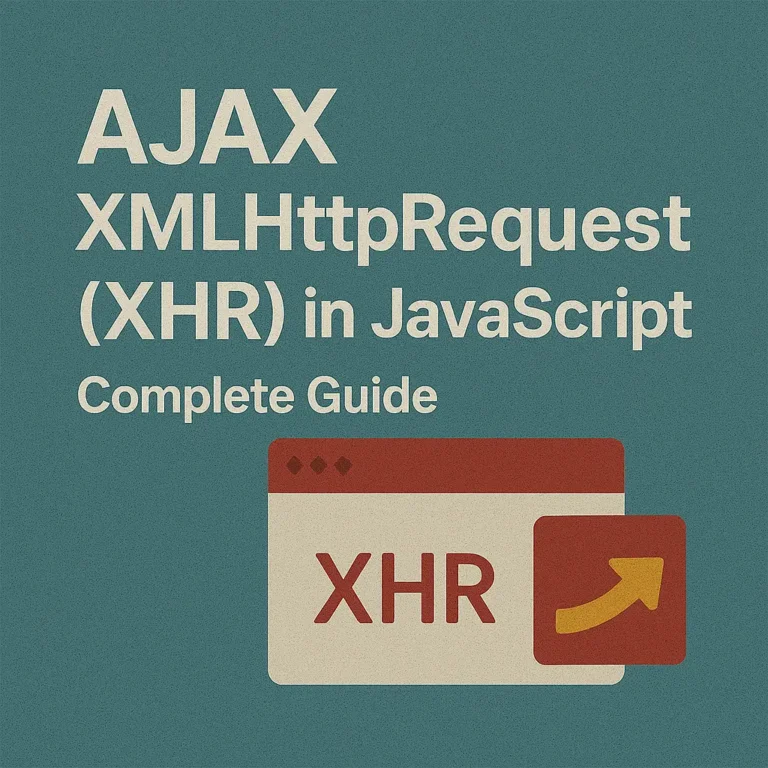AJAX enables seamless communication between the client and server, facilitating smoother user experiences by fetching and updating data without requiring a full page reload. However, as with any powerful tool, AJAX brings its own set of security challenges that developers must address to safeguard their applications and users.
In this article, we’ll delve into three critical security considerations when working with AJAX: preventing Cross-site scripting (XSS), mitigating Cross-site request forgery (CSRF), and implementing Content Security Policy (CSP) for AJAX requests. We’ll explore each of these topics in depth, discussing the risks they pose and practical strategies to mitigate them.
Cross-site Scripting (XSS) Prevention
Cross-site scripting (XSS) remains one of the most prevalent and dangerous security vulnerabilities faced by web applications. XSS occurs when an attacker injects malicious scripts into web pages viewed by other users. These scripts can steal sensitive information, manipulate user sessions, deface websites, and even spread malware to unsuspecting visitors.
To mitigate XSS attacks in AJAX applications, developers should employ several best practices:
Input Sanitization:
Validate and sanitize all user inputs before processing or displaying them. Use libraries or frameworks that offer robust input validation functions to ensure that user-supplied data is safe to use.
Output Encoding:
Encode output data to prevent malicious scripts from being executed in the browser. HTML entities encoding, such as converting < to < and > to >, can effectively neutralize XSS payloads.
Content Security Policy (CSP):
Implement a strict CSP that limits the sources from which scripts can be executed on your web pages. CSP directives like script-src can restrict the domains allowed to load scripts, thereby mitigating the risk of XSS attacks.
Let’s illustrate these principles with a simple JavaScript example:
// Input sanitization example
function sanitizeInput(input) {
// Use a library like DOMPurify for thorough input sanitization
return input.replace(/<[^>]*>?/gm, '');
}
// Output encoding example
function encodeOutput(data) {
return data.replace(/</g, '<').replace(/>/g, '>');
}
// Content Security Policy (CSP) example
// Add CSP header to HTTP response
Content-Security-Policy: script-src 'self';
By incorporating these techniques into your AJAX applications, you can significantly reduce the risk of XSS vulnerabilities and protect your users’ data from exploitation.
Cross-site Request Forgery (CSRF) Prevention
Cross-site request forgery (CSRF) attacks exploit the trust a website has in a user’s browser to perform unauthorized actions on behalf of the user without their consent. In an AJAX context, CSRF attacks can lead to unintended state changes, data manipulation, and unauthorized transactions.
To defend against CSRF attacks in AJAX applications, consider the following strategies:
CSRF Tokens:
Include unique tokens with each AJAX request to verify the authenticity of the request. These tokens should be generated server-side and embedded within the page or included in HTTP headers.
SameSite Cookies:
Set the SameSite attribute for cookies to prevent them from being sent in cross-origin requests, thereby mitigating the risk of CSRF attacks involving cookies.
Referer Checking:
Validate the Referer header of incoming requests to ensure they originate from trusted sources. However, note that relying solely on the Referer header can be problematic due to its potential for manipulation.
Let’s demonstrate the implementation of CSRF tokens in AJAX requests:
// Generate CSRF token on the server side
const csrfToken = generateCSRFToken();
// Include CSRF token in AJAX request headers
$.ajax({
url: '/update',
type: 'POST',
headers: {
'X-CSRF-Token': csrfToken
},
data: { /* request data */ },
success: function(response) {
// Handle response
}
});
By incorporating CSRF tokens and other protective measures into your AJAX workflows, you can effectively mitigate the risk of CSRF attacks and maintain the integrity of your applications.
Content Security Policy (CSP) for AJAX Requests
Content Security Policy (CSP) is a powerful security mechanism that helps prevent various types of attacks, including XSS, data injection, and clickjacking. When working with AJAX requests, enforcing a strict CSP policy becomes crucial to control the sources from which resources can be loaded and executed.
Consider the following guidelines for implementing CSP for AJAX requests:
Granular Directives:
Define specific CSP directives, such as script-src and connect-src, to restrict the origins allowed to execute scripts and make AJAX requests. This limits the attack surface and mitigates the risk of malicious code execution.
Report-Only Mode:
Initially, deploy CSP in report-only mode (Content-Security-Policy-Report-Only) to monitor policy violations without enforcing restrictions. Analyze the generated reports to fine-tune your CSP policy and ensure compatibility with existing application functionalities.
Testing and Monitoring:
Regularly test your CSP policy using security scanners and browser developer tools to identify and address potential misconfigurations or bypasses. Monitor CSP violation reports to detect and respond to unauthorized resource loads or script executions.
Let’s define a CSP policy that restricts AJAX requests to specific origins:
<!-- Content Security Policy header -->
Content-Security-Policy: default-src 'self'; script-src 'self' https://apis.example.com; connect-src 'self' https://api.example.com;
In this example, only scripts from the same origin (‘self’) and the trusted API endpoints (https://apis.example.com, https://api.example.com) are allowed to execute, ensuring that AJAX requests are limited to authorized sources.
Conclusion
As the capabilities of AJAX continue to empower web developers to create dynamic and interactive user experiences, it’s essential to prioritize security throughout the development lifecycle. By understanding and implementing robust security measures such as XSS prevention, CSRF mitigation, and CSP enforcement, developers can safeguard their AJAX applications against malicious exploitation and protect the integrity and confidentiality of user data.
Remember, security is an ongoing process, and staying vigilant against emerging threats and vulnerabilities is paramount to maintaining the trust and confidence of your users in an increasingly connected digital landscape. By adopting a proactive approach to security and incorporating best practices into your development workflows, you can build AJAX applications that not only deliver exceptional functionality but also prioritize the safety and security of your users.






